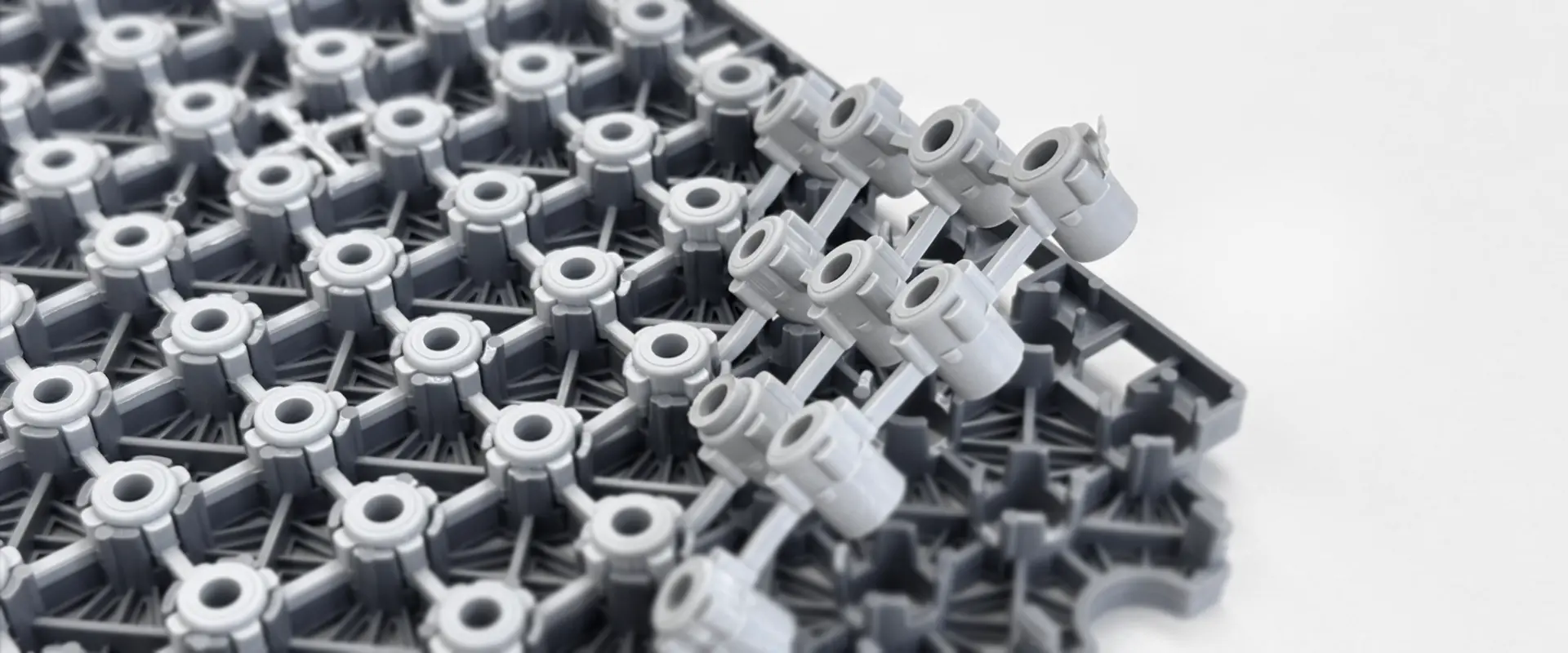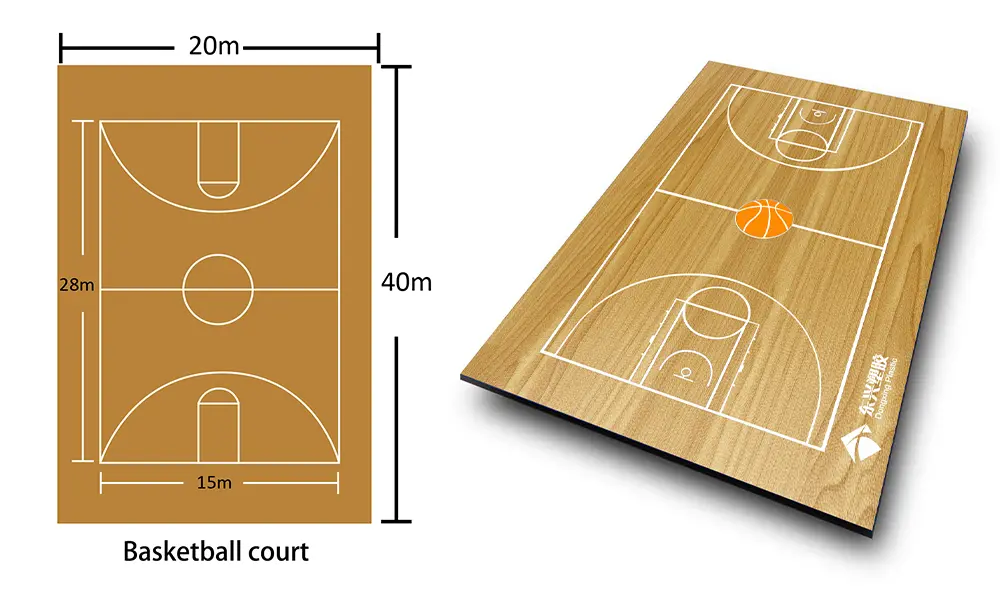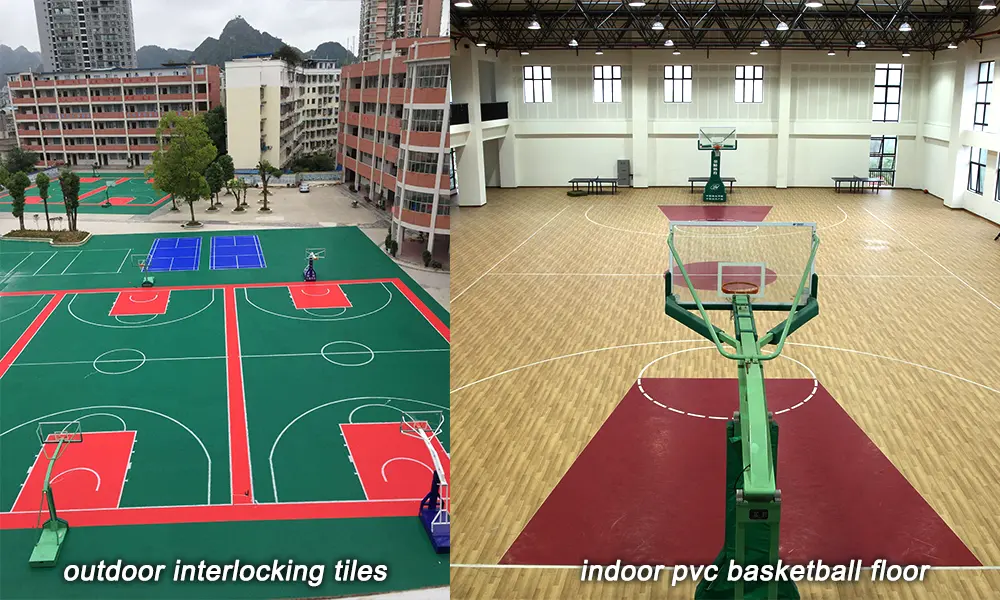Stable commitment to every leap, customized every flat
Blog


Stable commitment to every leap, customized every flat
Blog

When constructing a basketball court, it is essential to first understand the standard court dimensions, as these determine the fairness and competitiveness of the game. Additionally, the selection of floor materials is crucial for providing an optimal athletic environment. PVC sports flooring and suspended modular flooring are common choices, as they not only offer anti-slip and durable properties but also ensure athlete safety and enhance the aesthetic appeal of the space.
Court Dimensions: Length: 28 meters, Width: 15 meters
Including the dimensions required for flooring outside the lines: Length: 40 meters, Width: 20 meters
- Line Width: 0.15 meters
- Center Circle Radius: 1.8 meters
- Three-Point Line Distance from the Basket: 6.75 meters (since 2010; previously 6.25 meters)
- Free-throw line length: 5.80 meters from the inner edge of the end line to the outer edge, width: 3.60 meters
- Three-second zone rectangle dimensions: 4.90 meters × 5.80 meters
- Restricted area: A semicircle with a radius of 1.25 meters drawn from the center point where the basket rim touches the ground
- Inner rim diameter range: Minimum 0.45 meters, maximum 0.457 meters
- Rim height: 3.05 meters
- Lower edge of the backboard height from the ground: 2.90 meters
- Basketball court area is generally 420 square meters or 436.626 square meters

Width: 0.05 meters (5 centimeters)
Boundary lines: Boundary lines must be at least 2 meters away from spectators, advertising boards, or any other obstacles. The boundary lines along the long sides of the court are called sidelines, and those along the short sides are called end lines.
Midline: A line drawn parallel to the end line from the midpoint of the sidelines is called the midline, extending 0.15 meters (15 centimeters) beyond each sideline.
(1) The free-throw line is parallel to the end line, 5.80 meters from the inner edge of the end line, and 3.60 meters in length. Its midpoint must lie on the imaginary line connecting the midpoints of the two end lines.
(2) The restricted area is the ground area formed by drawing two lines from the ends of the free-throw line, each 3 meters from the midpoint of the end line. If the restricted area is colored, the color must match the color inside the center circle.
(3) The free-throw area is the restricted area plus a semicircular area drawn outward from the restricted area with the midpoint of the free-throw line as the center and a radius of 1.80 meters. The semicircle inside the restricted area must be drawn as a dashed line.
(4) The position areas on both sides of the free-throw area are used for players to stand during free-throw attempts.
They are defined as follows:
- The first line is 1.75 meters from the inner edge of the end line, measured along the sidelines of the free-throw zone.
- The width of the first position area is 0.85 meters (85 centimeters), adjacent to the neutral zone.
- The width of the neutral zone is 0.40 meters (40 centimeters), and it is filled with the same color.
- The second position area is adjacent to the neutral zone and has a width of 0.85 meters (85 centimeters).
- The third position area is adjacent to the second position area and also has a width of 0.85 meters (85 centimeters).
- The lines used to mark these position areas are 0.10 meters (10 centimeters) in length, perpendicular to the sideline of the free-throw zone, and located on the outer side.
1. pvc basketball court flooring
2. pp interlocking floor tiles

PVC sports flooring is a durable, slip-resistant material with a special surface coating that significantly reduces the risk of slipping. Its durable texture helps reduce muscle fatigue and stress during physical activity.
PVC vinyl sheet flooring is available in various colors, thicknesses, and patterns and is widely used in various sports facilities. It serves as a sturdy foundation for floor design and offers excellent wear resistance.
Sports shoes and various beverages pose no threat to PVC sports flooring. When installed with appropriate base materials, even heavy equipment like sports machinery moving across it leaves no marks.
Additionally, outdoor PP suspended modular flooring is a modern alternative to traditional sports surfaces. Its advantages include quick and easy installation and more fashionable color options, making it the top choice for outdoor sports venues.
Compared to indoor sports venues, outdoor sports venues face harsher environmental conditions, resulting in shorter floor lifespans. However, suspended modular flooring features UV resistance, oxidation resistance, cold resistance, and pressure resistance, making it suitable for various climatic regions. When used outdoors, suspended modular flooring typically has a lifespan of over five years. It is an excellent choice for outdoor recreational areas such as schools and communities.
Leave Your Message
Message us for free samples and quotes!